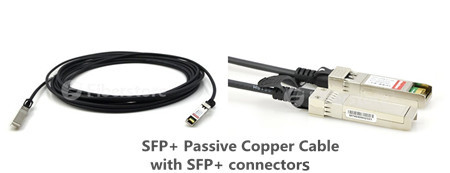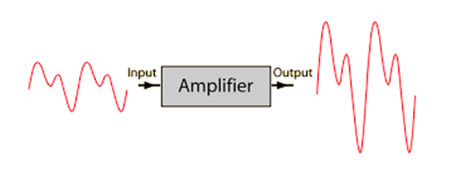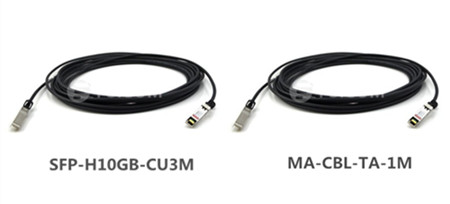Recently, enterprises are replying more and more on the cloud-based application, storage and management system for both internal use and remote access. If network infrastructure still uses 1000BASE-T network and SFP on the back-end today, it obviously can not meet people’s requirement and will be left behind by its competitor. The most cost-effective solution is to scale their network up by using 10 Gigabit Ethernet SFP+ equipped devices at the top pf the rack. Of which 10G SFP+ passive direct attach copper (DAC) cables are indispensable and highly recommended for short-reach interconnect application. Cisco, as the telecom giant, offers a wide selection of SFP+ passive copper cables in length raging form 0.5m all the way to 5m. The following article will go on to the detailed information about Cisco 10G SFP+ passive copper cables.
Introduction to Cisco SFP+ Passive Copper Cables
SFP+ copper twinax direct-attach cables from Cisco are developed as a cost-effective alternative for very short links in high-speed interconnect application within racks and across adjacent racks. This SFP+ passive copper cable assembly uses twinax shielded cable with robust die cast connector interfaces for enhanced support of high frequency data rates, which means signals travel over parallel pairs of conductors. 10G SFP+ twinax copper cables contains 2 pairs—one for transmit (Tx) and one for receive (Rx) and each shielded pair is surrounded by an overall shield. Cisco passive twinax cables are offered in different lengths of 1, 1.5, 2, 2.5, 3 and 5 meters. I know you are quite familiar with SFP+ passive copper cable, now let’s get down to the role of the 10G SFP+ passive DAC cables.

What Is the Role of the 10G SFP+ Passive Copper Cable?
10G SFP+ passive copper cable is effectively viewed as a transparent cable to the switch and requires little to no direct power to operate. It seems that a passive cable just acts as a pass-through transmission medium and do nothing to the signal, then how exactly is the signal processed in the first place? In most cases, this activity resides exclusively inside the electronic circuitry of the switch. The switch will generally perform the following functions to the signal prior to its transmission through the cable assembly:
- Signal Conversion
Signal conversion occurs first in instances where electrical circuits must interface with optical circuits. Since some switches operate select ports in the optical domain (i.e. fiber optic light pulses), that optical signal must then be converted over to an electrical signal that can be further modified and reliably sent over an electrical transmission medium such as copper cabling.
- Signal Conditioning
Signal conditioning is in essence preparing the signal for the next step of the process. This could involve formatting the signal using a standardized electrical modulation pattern that other down-stream equipment can recognize. This could be conditioning the signal into a 10-bit/8-bit pattern where 8-bit segments of data require encapsulation in a 10-bit “packet” featuring additional header information that is used for error correction and re-transmission mechanisms.
- Signal Amplification
The next critical step, signal amplification, will raise the newly conditioned signal from a low-strength “machine level” signal to a far more powerful or amplified signal. Signals are kept at lower strength levels inside the switch’s processing architecture for several reasons, including reduced power consumption, improved heat dissipation, reduced noise/interference characteristics and so on. However, this internal “baseband” signal is far too weak to travel the typical distances commanded by cable assemblies. They”re only designed to travel a few inches around a PC-board or chipset!

- Signal Equalization
Now, if we were dealing purely with signals of past eras such as 10/100 Megabit (Fast) Ethernet, the final phase known as signal equalization would be totally unnecessary. However, a signal such as the one sent over SFP+ Cables requires hundreds of MegaHertz (MHz) or even GigaHertz (GHz) of signal bandwidth to operate effectively. The problem with such wide-banded signals is that the lower portion of the signal may arrive at the other end of the cable faster or stronger than the higher portion of the signal. This causes an anomaly known as time delay and/or phase delay SKEW that absolutely wreaks havoc on the signal itself, sometimes to the point of being unrecoverable.
To avoid this, the signal must be equalized accordingly. On the transmission channel of the link, the signal must go through a process called Pre-Emphasis. It does exactly what it sounds like—it pre-emphasizes (boosts) the portion of the signal that tends to get skewed. Similarly, on the receive channel of the link, the signal portion must be reciprocally de-emphasized (lowered). This complete process of equalization equalizes the signal so that it is uniform and free of SKEW and therefore ready to be sent over a specific transmission medium, i.e. a SFP+ passive DAC cable.
Third-party Cisco SFP+ Passive DAC Twinax Cable
Enterprises today are seeking to cut down the costs, but the original Cisco SFP+ passive copper cable are very expensive. Therefore 3rd-party SFP+ optics with its lower price is the ideal choice. Although many vendors supply 3rd-party SFP+ optics with different specifications, in my opinion, Fiberstore does the best among them. We provide all kinds of compatible 10G SFP+ cables, especially the SFP-H10GB-CU3M and MA-CBL-TA-1M, which can entirely replace the Cisco original ones.

- SFP-H10GB-CU3M
SFP-H10GB-CU3M from Fiberstore is a Cisco compatible 10GBase-CU SFP+ to SFP+ direct attach cable that operates over passive copper with a maximum reach of 3.0m. It has been programmed, uniquely serialized, and data-traffic and application tested to ensure it is 100% compliant and functional. Ddirect attach cables are built to comply with MSA (Multi-Source Agreement) standards. 10G SFP+ passive copper cables are well-tested before shipping worldwide and cost much lower than the original ones. - MA-CBL-TA-1M
MA-CBL-TA-1M from Fiberstore is a Cisco compatible SFP+ to SFP+ direct attach cable that operates over passive copper with a maximum reach of 1.0m. This is a twinax cable featuring two male SFP+ connectors.
Conclusion
Cisco 10G SFP+ passive copper direct attach cable is defined for 10GbE applications over passive copper cable within a very short reach, but its popularity are largely limited by the high cost. Thus people are seeking to purchase from OEM vendors like Fiberstore. All products offered by Fiberstore are tested in-house to ensure that they will arrive in perfect physical and working condition. Fiberstore can guarantee these 10G SFP+ optics to work in your system and all of their 10G SFP+ passive DAC cables come with a lifetime advance replacement warranty.
评论
发表评论